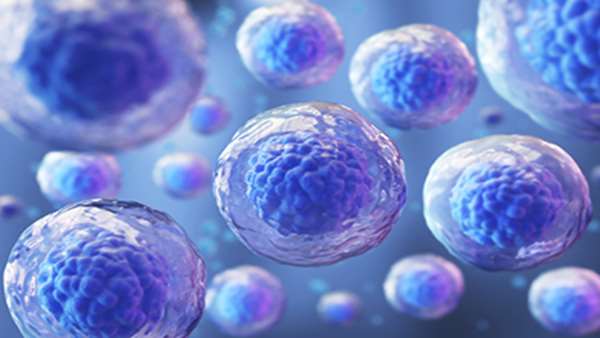At present, cell therapy manufacture is a strange hybrid between highly sophisticated science and cottage industry. It takes several highly skilled individuals to make a therapy for a single person; whereas to meet the demand, and to be viable, one individual needs to be able to simultaneously produce “doses” for many people. As I see it, this is the primary purpose of mechanization and automation.
One such challenge faced by therapy product developers is how to choose production equipment that is both suitable for the current stage of development and will enable smooth transfer to commercial manufacture. During the Phacilitate Automation SIG, I facilitated a working session that addressed this question and the report is published below (with the permission of Phacilitate).
Ensuring Bioprocess Flexibility: How to Choose Between Module or Sub-Module Solutions
This chapter and its corresponding session at Phacilitate’s Automation SIG sought to articulate a
typical process development progression, from fully flexible to fully constrained. Different dimensions of flexibility such as process operation mechanism, chemistry, process parameters, volume/scale, sampling/bio-analytics and the ideal equipment modularisation to support it are explored and mapped against evolving constraints on the process: regulatory, COGs, QTPP.
This can be split into three core themes;
What do we mean by flexibility? How do we define different dimensions of flexibility?
Why do we need flexibility? When do we need it? How can we map optimum flexibility against timing?
Identifying the ideal modules/sub-modules across the map.
Defining process flexibility
We explored the idea that there are different aspects of dimensions in a process that we may wish to change or optimise as process development progresses. The following 10 were selected, but without doubt there are other aspects of the process that may need to be changed.
Analytical reagents – meaning the reagents used in the QC lab for IPC and QC assays
Operator interventions/touches – e.g. early in process development you may want opportunities for operator interventions based on their observations of cell condition
Data being captured – early in PD you may prefer a large number of samples and assays to better understand the product, later you may reduce the QC assays to the critical few but increase data capture from sensors for statistical analysis
Cell manipulation methods – the core cell process, for example, transduction method, or growth factors, or expansion
Equipment unit ops platforms – the equipment or method for cell washing, media exchange, formulation
Starting material – fresh or frozen, leukapheresis, peripheral blood, bone marrow
Chemistry (media, reagents, buffers) – includes
both selected reagents and also vendor selection and supply chain
Bioanalytics – the method chosen for performing key measures of cell biology, typically defined as Critical Quality Attributes in a QTPP
Process parameters – flow rates, temperatures, expansion duration, cell concentrations, media exchange volumes,
Volumetric scale (dose) – in early stages, patient material may be split into small portions for research; at clinical stages, a range of doses (cell count) and volumes may be tested
We found that the transitions from fully flexible to fully fixed progressed at a somewhat different rate for the aspects of the process we had defined as pictured in Fig.5.
Defining typical process development stages
It is well understood that the degree of flexibility available to process developers changes as drug development progresses to clinical trials and marketing approval. In other words, the consequences of making a
change become more significant in terms of both cost and time delays. The group defined the consecutive progression can be found on the x-axis of the figures in this chapter.
Recognising the transitions of flexibility for different dimensions
On exploring the aspects of the process, we recognised that some aspects can remain flexible for longer than others. This is represented in Fig.5, which represents the transition to increasingly costly changes by using darker shading. Note that this was just the view of the team at Phacilitate’s SIG, but it may be possible to quantify this information further by referencing the EU “Guidelines on the details of the various categories of variations”…
How does the optimum extent of modularisation change as process development progresses?
For the purposes of this chapter, we agreed on the following classifications of modularisation:
Manual, lab devices, open fluid transfers in Class A hood
Independent unit operation modules automated
(e.g., cell selection, bioreactor)
Integrated modules, with single manufacturing execution system ideally one machine
The benefits for each of these classifications and their relative location on the process development timelines were then mapped.
What does this mean for the industry?
We’re aware that the proposition described by the modularity overlay charts above are not so much based on practical experience, but more on an envisioned future.
Nevertheless, the preferred future certainly includes independent unit operation modules that provide reliable, repeatable operations and flexibility in unit choice and parameters. Better still if these modules can later be integrated. At present, there are very few examples of modules that provide robust unit operations.
In general, the bioreactors and cell expansion devices are reasonably robust, and the emergence of a number of new options is both welcomed and important. Cell selection techniques are less well established. Most of
these methods and modules are subject to the common compromise between purity and recovery. Others are uncomfortably expensive.
Likewise, transduction methods are either unavailable at patient scale (such as electroporation), or unsustainably expensive (vector supply). Other developments are at early stage development and eagerly anticipated.
Furthermore, it is often the case when a cell therapy developer selects automated unit operations they are often faced with performing fluid transfers between modules using open transfers under a hood. Interfacing modules, fluidic connectivity and data connectivity are urgently required.
The key lesson from this chapter
The industry is in urgent need of a range of unit modules for performing unit operations, that have stable and proven performance.
Secondly, standards of interconnectivity are required between these modules for both fluidics, but also data transfer and control supervision.
https://www.cellandgene.com/doc/ensuring-bioprocess-flexibility-for-cell-therapy-production-0001




ارسال به دوستان